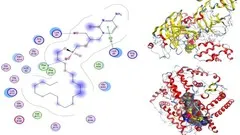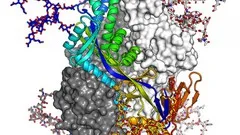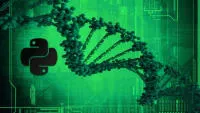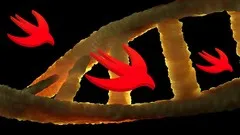
Drug Design and Molecular Docking by using computation Tools 
This course is designed to help science students become proficient in the field of drug discovery and development simulation studies. It covers the basics of computer-aided drug design (CADD) and molecular docking, including how to install the Molecular Docking Environment (MOE) and retrieve ligands from bioinformatics databases. Students will learn how to perform molecular docking, 2D and 3D molecule interactions, and use the AutoDock software to solve a real-world problem. The course also covers the use of MOE software to study naturally occurring compounds, antivirals, antifungals, anti-nematodes, and anti-protozoal drugs. Sign up now to learn the fundamentals of drug design and molecular docking and gain the skills to solve real-world problems. ▼
ADVERTISEMENT
Course Feature
![]() Cost:
Cost:
Paid
![]() Provider:
Provider:
Udemy
![]() Certificate:
Certificate:
Paid Certification
![]() Language:
Language:
English
![]() Start Date:
Start Date:
2021-02-21
Course Overview
❗The content presented here is sourced directly from Udemy platform. For comprehensive course details, including enrollment information, simply click on the 'Go to class' link on our website.
Updated in [August 18th, 2023]
Skills and Knowledge:
By taking this course, you will acquire skills and knowledge in the field of molecular orientation modeling, molecular docking, computer aided drug design, and the use of MOE software. You will learn how to install a molecular docking environment, retrieve ligands from a bioinformatics database, obtain protein sequences from the Protein Data Bank (PDB), and perform molecular docking. You will also gain an understanding of 2D and 3D molecules interactions and how to use them to develop drugs for various applications. Additionally, you will gain an understanding of the pharmaceutical industry and how it uses naturally occurring compounds, antivirals, antifungals, anti-nematodes, and anti-protozoal drugs.
Professional Growth:
This course contributes to professional growth by providing students with the knowledge and skills necessary to use molecular docking software to design and develop drugs. Students will learn how to install and use MOE software, retrieve ligands from bioinformatics databases, obtain protein sequences from the Protein Data Bank (PDB), and perform molecular docking studies. Additionally, students will gain an understanding of the interactions between 2D and 3D molecules, and how to use this knowledge to develop drugs for various applications, such as antivirals, antifungals, anti-nematodes, and anti-protozoal drugs. By the end of the course, students will have a comprehensive understanding of molecular docking and drug development simulation studies, which will be invaluable in their professional growth.
Further Education:
This course is suitable for preparing further education in the field of molecular orientation modeling and drug discovery. It provides a comprehensive introduction to the use of computer-aided drug design (CADD) approaches, including the analysis of ligands known to interact with a target of interest. The course covers the installation of molecular docking environment (MOE), retrieval of ligands from bioinformatics databases, obtaining protein sequences from the Protein Data Bank (PDB), and performing molecular docking studies of various naturally occurring compounds, antivirals, antifungals, anti-nematodes, and anti-protozoal drugs. Additionally, the course provides a real-world example of a drug agent called lutein, which is present in papaya, and its potential for protein resistance and drug agent capabilities. This course is therefore suitable for preparing further education in the field of molecular orientation modeling and drug discovery.
Course Syllabus
Introduction
How to retrieve protein & Ligand from Bioinformatic database?
How to install MOE Software?
How to preparation Protein & Ligand for docking?
How to performed Docking step?
How to analysis and visualize result?
Course Provider

Provider Udemy's Stats at AZClass
Discussion and Reviews
0.0 (Based on 0 reviews)
Explore Similar Online Courses

Learn DNA Primer Design for Polymerase Chain Reaction

Learn Bioinformatics From Scratch (Theory & Practical)

Python for Informatics: Exploring Information

Social Network Analysis

Introduction to Systematic Review and Meta-Analysis

The Analytics Edge

DCO042 - Python For Informatics

Causal Diagrams: Draw Your Assumptions Before Your Conclusions

Whole genome sequencing of bacterial genomes - tools and applications

Learn Biopython: Preliminary Step Toward Bioinformatics

Introduction to programming for Bioinformatics with Python


Start your review of Drug Design and Molecular Docking by using computation Tools